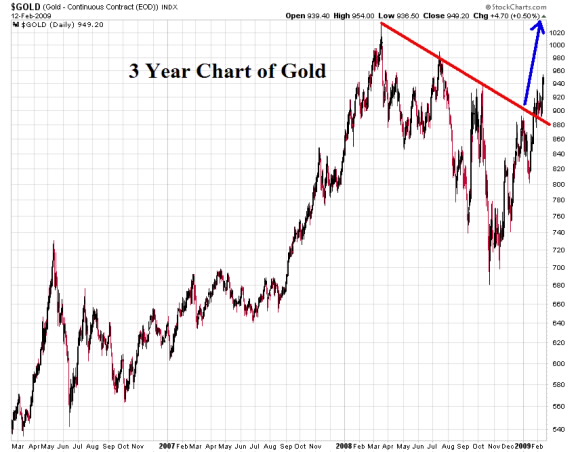By GCI Fx Research
€
The euro depreciated vis-à-vis the U.S. dollar today as the single currency tested bids around the US$ 1.2540 level and was capped around the $1.2675 level. Federal Reserve Chairman Bernanke testified today and said the Obama budget plan is an “ambitious agenda.” He also informed Congress that policymakers must decide between financial stability and fiscal stimulus in the medium-term. U.S. equity markets opened to the high side and then faded back to the minus side during Bernanke’s question-and-answer session. Bernanke also referred to AIG as an “uncomfortable situation” in which an insurance company was essentially operating as a hedge fund. Traders are already speculating that Friday’s U.S. February non-farm payrolls number is going to be horrendous. The Fed also announced the launch of the Term Asset-Backed Securities Loan Facility (TALF), a component of the Consumer and Business Lending Initiative (CBLI). For now, this facility will lend up to US$ 200 billion to certain owners of AAA-rated asset-backed securities. U.S. Treasury Secretary testifies before the House later in the North American session. Data released in the U.S. today saw the January pending home sales index off 7.7%. Boston Federal Reserve President Rosengren reported “I believe it would be desirable to move quickly to remove problem assets from bank balance sheets, so banks can once again focus on future prospects rather than past mistakes. Banks without troubled assets focus on avoiding further losses and further depleting capital.” Policymakers are trying to avoid what the market is now calling “zombie banks” – banks that receive appreciable amounts of public liquidity injections, aren’t nationalized, and aren’t being restored to a healthy position. In eurozone news, many traders expect the European Central Bank will ease interest rates by 50bps on Thursday. European Union official Alumnia reported the EU will consider assembling a second fiscal stimulus for the region. The French government warned its 2009 public deficit will exceed 5% of gross domestic product. Euro bids are cited around the US$ 1.2475 level.
¥/ CNY
The yen depreciated vis-à-vis the U.S. dollar today as the greenback tested offers around the ¥98.15 level and was supported around the ¥97.00 figure. The yen was given across the board as some risk appetite returned to the markets following significant losses in global equity markets yesterday. There is ongoing speculation Japan may pursue a weaker yen in the coming months to counter its eroding trade balance, historically a major contributor to the country’s gross domestic product. Bank of Japan Policy Board member Suda speaks overnight and may discuss the central bank’s plans to purchase additional market assets such as Japanese government bonds. The Nikkei 225 stock index lost 0.69% to close at ¥7,229.72. U.S. dollar offers are cited around the ¥104.15 level. The euro moved higher vis-à-vis the yen as the single currency tested bids around the ¥124.25 level and was supported around the ¥121.70 level. The British pound moved higher vis-à-vis the yen as sterling tested offers around the ¥138.60 level while the Swiss franc moved higher vis-à-vis the yen and tested bids around the ¥83.90 level. The Chinese yuan depreciated vis-à-vis the U.S. dollar as the greenback closed at CNY 6.8413 in the over-the-counter market, down from CNY 6.8438. People’s Bank of China Vice Governor Su Ning reported China’s foreign reserves are only invested outside of China to avoid inflation the country’s money supply. Commerce Minister Chen said there is not a need for the yuan’s exchange rate to depreciate slightly now.
₤
The British pound came off vis-à-vis the U.S. dollar today as cable tested bids around the US$ 1.3985 level and was capped around the $ 1.4155 level. Traders are poised for another interest rate cut from Bank of England’s Monetary Policy Committee on Thursday. More importantly, however, traders expect BoE will announce plans to conduct unstertilized asset purchases and expand its balance sheet. This would be similar to the Fed’s massive credit easing and will be designed to steer market interest rates lower, especially in the asset-backed commercial paper market. CBI today reported 60% of companies have seen the availability of credit worsen. Also, it was reported that U.K. February construction PMI worsened to 27.8. Cable bids are cited around the US$ 1.3340 level. The euro moved higher vis-à-vis the British pound as the single currency tested offers around the ₤0.8995 level and was supported around the ₤0.8930 level.
Daily Market Commentary provided by GCI Financial Ltd.
GCI Financial Ltd (”GCI”) is a regulated securities and commodities trading firm, specializing in online Foreign Exchange (”Forex”) brokerage. GCI executes billions of dollars per month in foreign exchange transactions alone. In addition to Forex, GCI is a primary market maker in Contracts for Difference (”CFDs”) on shares, indices and futures, and offers one of the fastest growing online CFD trading services. GCI has over 10,000 clients worldwide, including individual traders, institutions, and money managers. GCI provides an advanced, secure, and comprehensive online trading system. Client funds are insured and held in a separate customer account. In addition, GCI Financial Ltd maintains Net Capital in excess of minimum regulatory requirements.
DISCLAIMER: GCI’s Daily Market Commentary is provided for informational purposes only. The information contained in these reports is gathered from reputable news sources and is not intended to be U.S.ed as investment advice. GCI assumes no responsibility or liability from gains or losses incurred by the information herein contained.


